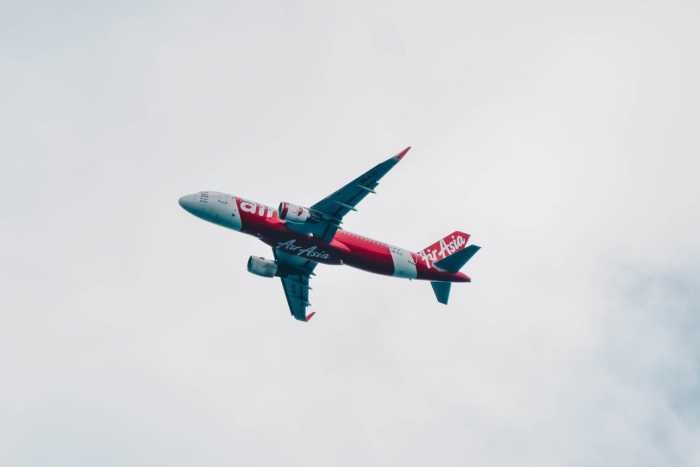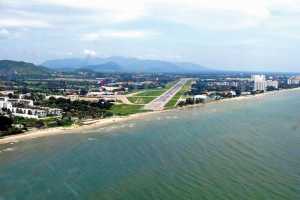
Mobile Phones and Airlines
2nd Aug 2010

Question: Do you turn off your mobile phone when requested to do so by the airline you are traveling on before takeoff from the Airport? Answer: Mostly, but not always.
This doesn't mean you are intentionally flouting the law and putting all other passengers and crew in imminent danger of crashing, it just means that passengers these days like to interpret, or misinterpreted, the in flight announcement to suit themselves.
For example they may turn off the ringer but leave the phone on; leave the phone on and profusely feign forgetfulness when it rings; leave it on by accident despite the warnings or, and this happens, leave it on in full view of the staff and kick up a fuss when they object. In fact such as the concern about safety, that it doesn't need a flight attendant to tell an errant, confrontational passenger to turn the phone off, the other passengers will do it for them.
The question these days, however, is whether the plane is at risk because a cell phone is on during flight, whatever the reason. The answer to this is: yes but, increasingly, less so.
It should be added, however, that civil aviation authorities around the world still ban use of cell phones at take off and landing, the two most potentially vulnerable times of a flight, but that cell phones can now be used in flight, under certain conditions and using specialist technology.
This means the industry has come a long way in just a few years in developing this technology. Research carried out by the UK Civil Aviation Authority in the early 200s showed that, amongst a number of things, anomalies appeared in flight when a cell phone operating at maximum level and located 30cms from the 'victim' equipment or its wiring harness resulted in a freezing of the aircraft compass, unstable indicators, digital navigation bearing display errors, reversal of the VOR navigation to/from indicator [ VOR is a short range air navigation aid which is used for landing, terminal and en route guidance, regular weather forecasts, special flight instructions and voice and code station identification ].
That's a distressing list. But take heart. Things have moved on since then. The risk of cell phone interference endangering an aircraft, particularly a large, modern jet, is very low. Aircraft are designed to cope with all sorts of emergencies and equipment failures. But 'low' is not good enough in the airline industry. Hence the ban continuing on take off, climb, approach and landing.
However, today cell phones are becoming an increasingly common sight on aircraft because of massive advances in technology which has come a long way since 2005 when the first in flight mobile technology was employed on a Boeing 777-200LR demonstrator aircraft. It was subsequently trialed with Qantas Airways in 2007. In March, 2008 the AeroMobile system both Boeing and Qantas used made the first authorized in flight calls on a commercial flight with launch customer Emirates [ AeroMobile is a UK based company which has taken a lead in developing safe use of mobile phones in flight ].
Here's how an in flight mobile phone service, developed by another pioneer company called OnAir for the Irish based low cost carrier Ryanair, works.
Once your cell phone or Blackberry is switched on it connects to a mini-GSM network within the plane. The GSM signal is transmitted to the ground through an Inmarasat SwiftBroadband satellite link where the data is transferred to OnAir's telecom infrastructure then hooks into the public telecom network which beams the data across the dialed phone number or requested website. This, at the moment is a limited service but work is proceeding on expanding it.
So the technology has arrived. All that is required now is further development of it'and a change in social/public attitudes toward cell phones in flight. As far as the airlines are concerned they want cell phone technology. Not only because it is now safe to use but because there is money to be made.
A note here: in flight cell phones don't seem to have caught on in Asia as much as the United States, and particularly Europe, with the exception of early adopted Malaysian Airlines, which since November, 2008 has used AeroMobile systems to enable flight voice calls and text messages. At last count it had a passenger adoption rate of 40 percent. Australia V, the Qantas long haul, low cost carrier, is also expected to take up AeroMobile technology. Both airlines fly directly to Phuket. AeroMobile and OnAir are licensed to specific airlines in Europe to use their technology and Emirates also began allowing voice calls in flight on some commercial flights in 2008.
How are the cell phone being used? There is high Blackberry use, because of the texting technology, which is quieter than talking, of course. Business people use previously 'lost' time to do business; holidaymakers could, theoretically, ring ahead to say their flight is late and drunken stag parties could have endless fund texting each other over the most attractive stewardess (something highly likely on some of the Phuket bound flights, know doubt). Also of note: the cell phones are switched to silent during flight.
This addresses one of the main social issues relating to cell phones in flight. The most frequent objection raised is to people talking on cell phones while everyone else wants to quietly sleep, read, eat, drink or watch a movie. There is truth in this assertion. It's well established that most people talk louder on cell phones. One reason is that people subconsciously rely on hearing their own voice back to modulate their own speech volume. Mobile phones do not introduce adequate 'sidetone' (a reduced volume copy of that person's speech) back into the earpiece. Landlines have done this for a long time. Also, the higher background noise on an aircraft would force people to talk louder. Mobile phone conversations could also be lengthier.
Some airlines are looking at the concept of 'cell phone zones' and 'quiet time' on long haul flights [no talking but texting allowed?]. It was once argued that airlines were against cell phones in flights because they wanted to encourage passengers to use their own in-flight phone services. But these services are rarely used because of their expense. Airlines are catching the cell phone wave. With the almost simultaneous growth in air transport and cell phone technology over the last two decades, they cannot afford to miss the boat [plane!!].









